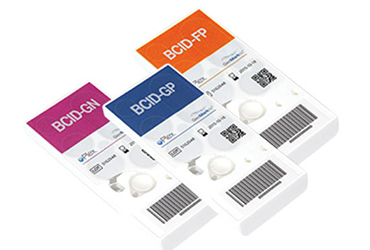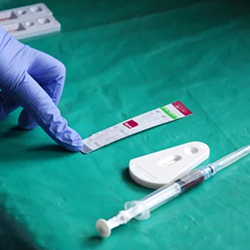By Landon Gray
Fungi may be identified earlier, lowering associated mortality rates, by reporting the results of the GenMark ePlex Fungal Blood Culture Identification Panel (BCID-FP) into the electronic medical record (EMR), according to data shared at ASM Microbe 2023, the annual meeting of the American Society for Microbiology, held in Houston (poster 295).
According to researchers, BCID-FP uses electrowetting technology to detect the 15 most common causes of fungemia. They noted the ability to rapidly identify fungal species and innate resistance patterns improves antifungal stewardship.
“Improving early organism identification in fungemia is vital to antifungal stewardship,” study investigator Stefania Carmona, MD, DTM&H, a PGY-5 infectious disease fellow at the University of Alabama at Birmingham, told Infectious Disease Special Edition. “GenMark Diagnostics ePlex identifies 15 different causes of fungemia. This includes the most common Candida species and Candida auris, as well as four non-Candida targets (Cryptococcus gattii, Cryptococcus neoformans, Fusarium and Rhodotorula).”
There are two major benefits of earlier detection, according to Dr. Carmona. One, early organism identification in candidemia allows for de-escalation or expansion of antifungal therapy based on each Candida species’ known intrinsic resistance patterns. Conversely, early organism identification in fungemia by non-Candida organisms allows clinicians to ensure that the patient is receiving appropriate targeted therapy.
“For example, if the blood cultures identify yeast, the typical empiric antifungal therapy is an echinocandin. In non-Candida organisms such as C. gattii, C. neoformans, Fusarium and Rhodotorula, echinocandins are not first-line empiric therapy,” she added. “In this case, if there is a delay in organism identification, there would be a delay in appropriate antifungal coverage.”
To examine the impact of BCID-FP on stewardship among patients with fungemia, the investigators evaluated initial blood culture bottles in patients with fungal organisms on Gram stain with both the BCID-FP and standard of care, matrix-assisted laser desorption/ionization time-of-flight mass spectrometry (MALDI-TOF MS).
The study was divided into two groups: the pre-implementation phase (n=35) and the post-implementation phase (n=71).

In the pre-implementation phase, only results from MALDI-TOF MS were reported in the EMR, while BCID-FP was performed without notifying the provider.
The results from BCID-FP were reported to the EMR during the post-implementation phase.
The investigators performed chart reviews to assess fungemia risk factors and the potential impact of reporting the results of BCID-FP (pre-implementation) compared with the actual impact (post-implementation) on the time to identify the organism and patient outcomes.
The three most commonly detected organisms were Candida albicans (n=48), Candida glabrata (n=15) and Candida parapsilosis (n=14). BCID-FP failed to detect polymicrobial C. albicans.
The researchers found that upon reporting BCID-FP results into the EMR, fungi were identified 1.43 days earlier compared with standard of care. There was also a 2.7-fold increase in de-escalation feasibility, and a trend toward increased empiric therapy.
Additionally, there was a 25% decrease in 30-day mortality.
The researchers noted two potential confounding variables between the phases. In the post-implementation phase, there was an increased percentage of patients enrolled during the COVID-19 pandemic and an increased percentage of isolates with low rates of Flu R. The data were confounded by different phases/waves of the pandemic.
“The pre-implementation phase was during the beginning of the COVID-19 pandemic, and we believe this may have contributed to the higher pre-implementation phase 30-day mortality rate compared with the post-implementation phase,” she noted. “The 28% 30-day mortality rate in the post-implementation phase is within the range expected for candidemia.”
The investigators plan to further investigate their findings by expanding the pre-implementation cohort/chart review to match the post-implementation isolates and evaluate clinical barriers to de-escalation. Now that two years of data are available, they also plan to evaluate post-implementation test performance characteristics.
Dr. Carmona reported GenMark Diagnostics funded the study.




